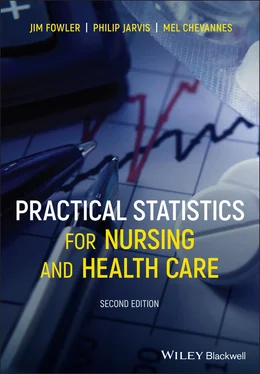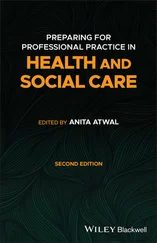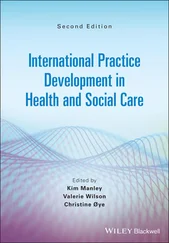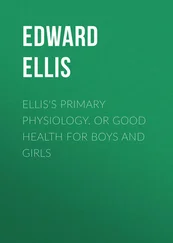The rights of Jim Fowler, Philip Jarvis and Mel Chevannes to be identified as the author(s) of this work have been asserted in accordance with law.
Registered Office(s) John Wiley & Sons, Inc., 111 River Street, Hoboken, NJ 07030, USA John Wiley & Sons Ltd, The Atrium, Southern Gate, Chichester, West Sussex, PO19 8SQ, UK
Editorial Office 9600 Garsington Road, Oxford, OX4 2DQ, UK
For details of our global editorial offices, customer services, and more information about Wiley products visit us at www.wiley.com.
Wiley also publishes its books in a variety of electronic formats and by print‐on‐demand. Some content that appears in standard print versions of this book may not be available in other formats.
Limit of Liability/Disclaimer of Warranty The contents of this work are intended to further general scientific research, understanding, and discussion only and are not intended and should not be relied upon as recommending or promoting scientific method, diagnosis, or treatment by physicians for any particular patient. In view of ongoing research, equipment modifications, changes in governmental regulations, and the constant flow of information relating to the use of medicines, equipment, and devices, the reader is urged to review and evaluate the information provided in the package insert or instructions for each medicine, equipment, or device for, among other things, any changes in the instructions or indication of usage and for added warnings and precautions. While the publisher and authors have used their best efforts in preparing this work, they make no representations or warranties with respect to the accuracy or completeness of the contents of this work and specifically disclaim all warranties, including without limitation any implied warranties of merchantability or fitness for a particular purpose. No warranty may be created or extended by sales representatives, written sales materials or promotional statements for this work. The fact that an organization, website, or product is referred to in this work as a citation and/or potential source of further information does not mean that the publisher and authors endorse the information or services the organization, website, or product may provide or recommendations it may make. This work is sold with the understanding that the publisher is not engaged in rendering professional services. The advice and strategies contained herein may not be suitable for your situation. You should consult with a specialist where appropriate. Further, readers should be aware that websites listed in this work may have changed or disappeared between when this work was written and when it is read. Neither the publisher nor authors shall be liable for any loss of profit or any other commercial damages, including but not limited to special, incidental, consequential, or other damages.
Library of Congress Cataloging‐in‐Publication data applied for
ISBN: 9781119698524
Cover Design: Wiley
Cover Image: © Floortje/Getty Images
Demographic, economic, political and environmental changes have been taking place at a phenomenal pace, nationally and internationally. Many of these changes affect people's needs for health care. At the same time, the demand for health care mounts from a more informed public having access to information from online sources and websites. Campaigns for safe and speedy intervention determine the treatments available and those yet to enter the health care system. The twin axes of patients' safety and the personalized treatment they need require nurses and health care professionals to be confident in the use of statistics, for example, in calculating dosages in oral, liquid, tablet, intravenous, intramuscular and subcutaneous forms. Nurses and health care professionals should be familiar with the meanings and significance of the numbers they encounter in the context of the care they provide.
While it is estimated that there are already approximately 35 million nurses and midwives worldwide contributing to the total health care workforce, there are increasing numbers of other persons seeking to acquire nursing skills at different levels and in a variety of settings, for example, in hospitals, in the community, in the workplace and in people's own homes. One approach to increasing the number of people entering nursing has been to expand the educational programmes. The Long‐Term Plan for the NHS (2019 ) backs six routes into nursing, including a degree course and a pilot accelerated postgraduate programme.
In the United Kingdom, professional regulatory bodies, such as the Nursing and Midwifery Council (2018 ) established evidence‐based proficiency standards of care to underpin pre‐registration nursing education and practice. The proficiency standards of care require, amongst other forms of knowledge and skills, an understanding of relevant research and statistics.
Changes in the Context of Health Care
The context of health care is changing, most notably between primary care/home/community‐based services and those provided in acute hospitals. Public expectation of wellness and patterns of disease have also changed, for example, patient referral with symptoms indicative of cancer is more rapid, leading to quicker diagnosis and treatment. At the same time, opportunities created by the development in pharmaceutical services and technological advances combine to increase the pace of change in nursing practice, pointing to the need for nurses to be prepared to respond in knowledgeable and practical ways, and to do so competently every time.
Technological Imperatives
Technological developments in nursing and health, for example, more efficient electronic imaging machines, e‐booking appointments with doctors in the community, patients' e‐records and complex calculations of dosage makes screening for diseases, diagnosis and monitoring much faster and more accurate. The use of hand‐held electronic devices provides an immediate record and instant feedback to the care team. Patients are likely to benefit from these improvements in the methods of data collection and use of technology by which diagnoses are made and, as a consequence, treatment and care will be more effective. Nurses and health care professionals need to know and understand the data they collect individually and collaboratively. Once they comprehend the data and they are converted into information for them, they must critically appraise the information and use it as the evidence base for their patients' care and treatment plans. Chapters 2and 3explain common methods of interpreting data sets with worked examples.
Changes in organizational scale, structure and systems make it essential for nurses to work together in teams to provide an integrated care for patients. A Plan of Care, for example, for patients with diabetes, may include an evaluation response of their response to medication – insulin or tablets – according to their age, gender and ethnicity. It could be extended for purposes of research to a comparative analysis of whether tablets or injections are more effective in controlling the patients' diabetes.
Team working in nursing and health care demands close coordination and collaboration, especially as data are likely to be collected from different sources and to require competent computation and analysis in order to arrive at sound clinical judgements. For example, team members have a responsibility to ensure that data about patients' kidneys obtained by computerized tomography (CT) should be placed in the patients' records, even when the scan shows no abnormality.
Nurses working in specialist clinical areas such as heart, thoracic surgery, intensive care, renal endoscopy clinics and cancer centres/units use skills of a highly technical and statistical nature that are described in specialist medical language that carries precise meanings. Nurses in these settings access, interpret and manage health information, and are required to record clinical changes in patients' conditions. Basic statistical principles enable nurses and health care professionals to decide on suitable treatment.
Читать дальше












